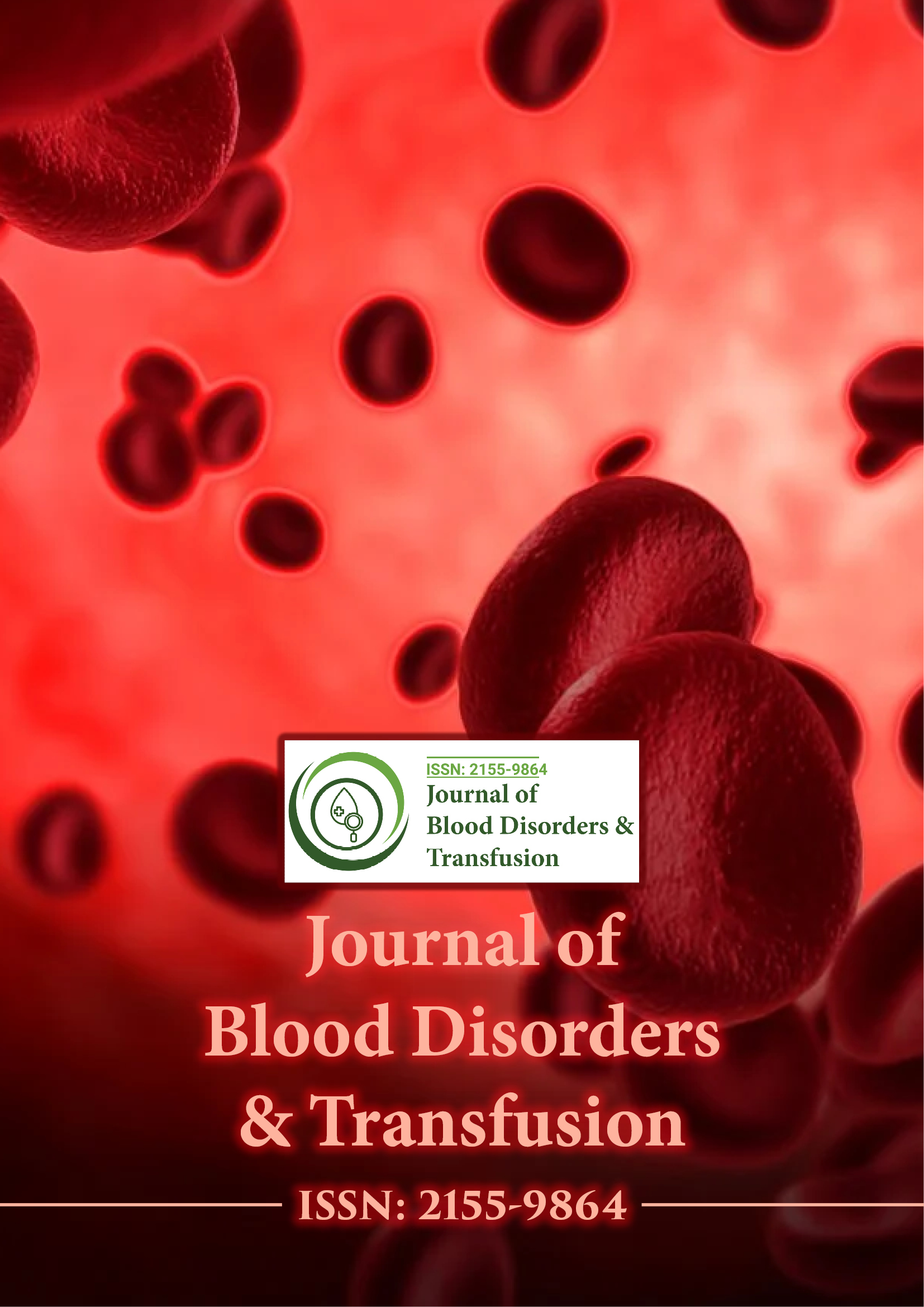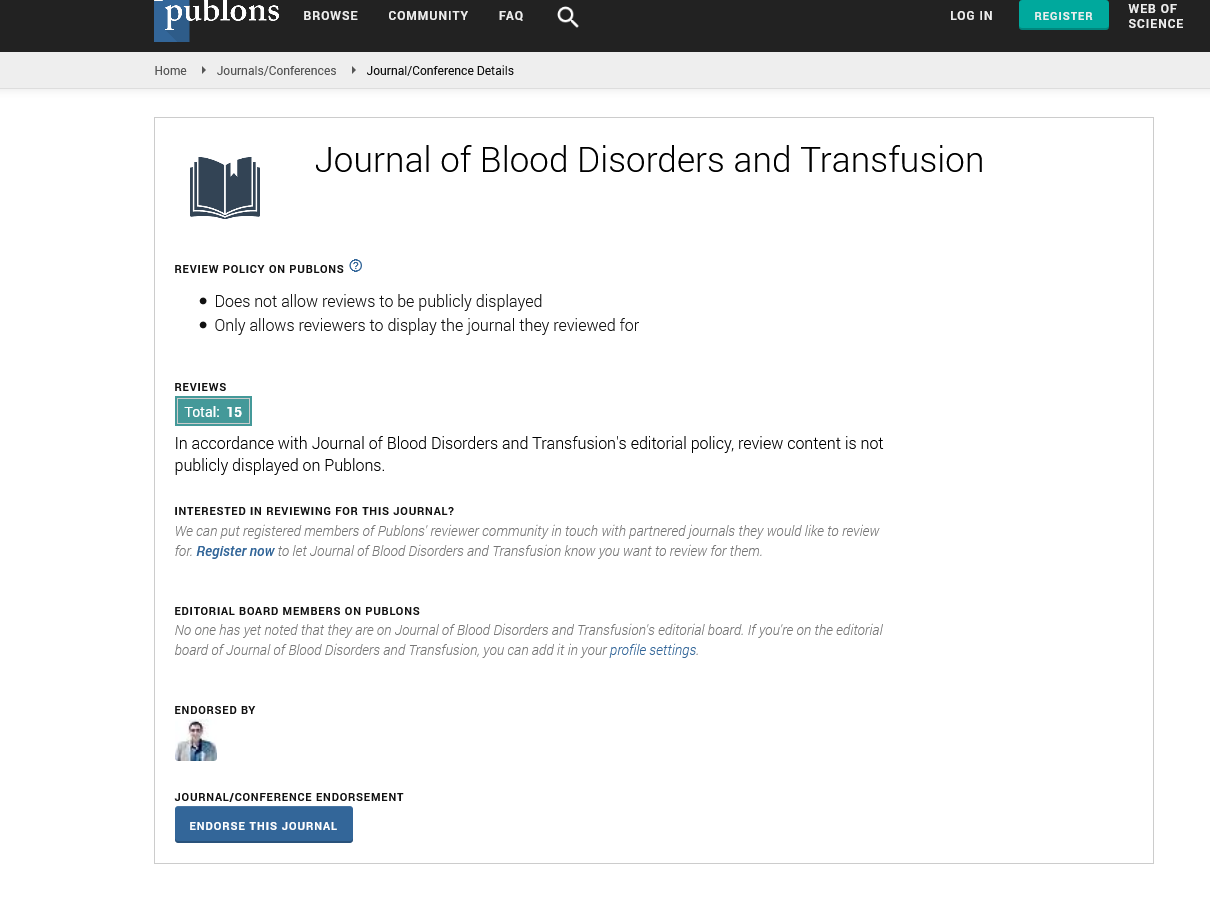Indexed In
- Open J Gate
- Genamics JournalSeek
- JournalTOCs
- Ulrich's Periodicals Directory
- RefSeek
- Hamdard University
- EBSCO A-Z
- OCLC- WorldCat
- Proquest Summons
- Publons
- Geneva Foundation for Medical Education and Research
- Euro Pub
- Google Scholar
Useful Links
Share This Page
Journal Flyer

Open Access Journals
- Agri and Aquaculture
- Biochemistry
- Bioinformatics & Systems Biology
- Business & Management
- Chemistry
- Clinical Sciences
- Engineering
- Food & Nutrition
- General Science
- Genetics & Molecular Biology
- Immunology & Microbiology
- Medical Sciences
- Neuroscience & Psychology
- Nursing & Health Care
- Pharmaceutical Sciences
Perspective - (2025) Volume 16, Issue 2
Tissue Remodeling and Enzyme Activity in Joints Affected by Hemophilia
Steven Leebeek*Received: 25-Feb-2025, Manuscript No. JBDT-25-28785 ; Editor assigned: 27-Feb-2025, Pre QC No. JBDT-25-28785 (PQ); Reviewed: 13-Mar-2025, QC No. JBDT-25-28785 ; Revised: 20-Mar-2025, Manuscript No. JBDT-25-28785 (R); Published: 27-Mar-2025, DOI: 10.4172/2155-9864.25.16.616
Description
Hemophilic arthropathy is a progressive joint disorder commonly seen in individuals with hemophilia, especially in those with repeated joint bleeding episodes. The condition is characterized by chronic synovitis, cartilage degeneration and joint deformities that impair mobility and reduce quality of life. While the pathology of hemophilic arthropathy has traditionally been attributed to mechanical damage from hemarthrosis, recent research highlights a significant biological component involving inflammation and degradation pathways. Among the systems gaining increased attention in this context are protease networks, which include Matrix Metalloproteinases (MMPs), serine proteases, and cysteine proteases. These enzymes play a significant role in regulating tissue remodeling, inflammation and cartilage breakdown and their dysregulation may contribute substantially to the development and progression of joint damage in hemophilic patients.
Hemophilic arthropathy
Hemophilia A and B are inherited bleeding disorders resulting from deficiencies in clotting factors VIII and IX, respectively. The lack of these factors leads to prolonged bleeding, particularly into muscles and joints. Recurrent hemarthrosis leads to synovial hypertrophy, inflammation and the activation of catabolic pathways. This results in progressive cartilage loss and joint space narrowing, culminating in chronic arthropathy. While replacement therapy with clotting factors has significantly improved clinical outcomes, it does not completely prevent joint damage, suggesting that other pathophysiological mechanisms are involved.
Protease systems
Proteases are enzymes that cleave peptide bonds within proteins, thereby modulating various physiological and pathological processes. They are broadly categorized into serine, cysteine, aspartic, threonine and metalloproteases based on their active site residues and mechanisms of action. These enzymes regulate immune responses, tissue remodeling, apoptosis and cellular signaling. In healthy joints, protease activity is tightly regulated by endogenous inhibitors, such as Tissue Inhibitors of Metalloproteinases (TIMPs) and serpins, ensuring a balance between matrix degradation and synthesis. However, in chronic inflammatory conditions, including hemophilic arthropathy, this balance is disrupted.
Matrix Metalloproteinases in joint destruction
Among the protease families, MMPs have been extensively studied in joint diseases due to their direct involvement in extracellular matrix degradation. MMPs such as MMP-1, MMP-3 and MMP-13 degrade collagen, aggrecan and other matrix proteins in cartilage and synovial tissue. Their overexpression in hemophilic joints has been associated with chronic synovitis and cartilage erosion.
Serine proteases and inflammation
Serine proteases, including neutrophil elastase, cathepsin G and proteinase 3, are predominantly released by activated neutrophils and other immune cells during inflammation. These enzymes contribute to the degradation of extracellular matrix components and activate additional pro-inflammatory mediators, thereby sustaining the inflammatory cycle within the joint.
Cysteine proteases and cartilage degradation
Cysteine proteases, particularly cathepsins B, K, and L, have been implicated in cartilage and bone resorption. Cathepsin K, for instance, is highly expressed in osteoclasts and is essential for bone matrix degradation. In hemophilic arthropathy, bone remodeling is often disturbed, with subchondral cysts and bone erosions frequently observed in advanced stages.
Regulation of protease activity
The human body possesses several natural mechanisms to control protease activity. Endogenous inhibitors such as TIMPs, serpins and cystatins regulate MMPs, serine proteases and cysteine proteases, respectively. In hemophilic arthropathy, however, this regulation is often insufficient due to the chronic inflammatory environment and recurrent joint bleeding.
Potential interventions targeting protease systems
Given the evidence implicating protease systems in hemophilic joint deterioration, targeting these enzymes presents an approach that may complement current therapies. Inhibitors of MMPs, serine proteases and cathepsins have been developed for other arthritic conditions and may be repurposed for hemophilic arthropathy. These agents aim to reduce tissue breakdown and inflammation, thereby slowing disease progression.
Citation: Leebeek S (2025). Tissue Remodeling and Enzyme Activity in Joints Affected by Hemophilia. J Blood Disord Transfus. 16:616.
Copyright: © 2025 Leebeek S. This is an open-access article distributed under the terms of the Creative Commons Attribution License, which permits unrestricted use, distribution, and reproduction in any medium, provided the original author and source are credited.

